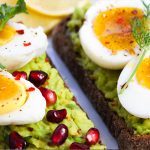Many people nowadays like to lose weight quickly through a low-carb diet. The main premise of a weight loss diet is to force your body into fat-burning mode by eating fewer carbohydrates. It is generally recommended to consume no more than 20 to 30 grams of carbohydrates per day to achieve this metabolic state.
So what does “low carb” mean and why does it help with weight loss?
What are carbohydrates?
There are three common nutrients in every bite of food: protein, carbohydrates and fat.While many foods contain these three macronutrients, most have a preference for one or two.For example, meat contains protein, bread is mostly carbohydrates, and olive oil is mostly fat.Your body needs all three nutrients.
What is a low-carb diet?
Low carb is often called “low carb,” but it’s not easy to define.Normally, this simply means reducing the number of carbohydrates you eat in a day.
Why does a low-carb diet lead to weight loss?
Carbohydrates are stored in the body as glycogen, which helps your body store energy.Each gram of glycogen contains about 3 grams of water, and your body stores water every time you eat a carbohydrate.In fact, about 70 percent of weight loss is water.
Speaking of carbohydrates, in fact, carbohydrates account for the majority of Chinese food structure, from morning, lunch and dinner, you can feel the slow carbohydrate, so many people lose weight first is on a diet.In fact, most nutritionists agree that low-carb diets are actually good for you.Reducing your carbohydrate intake throughout the day can help you reduce overall calories.Plus, you’re more likely to eat more nutrient-rich foods like protein, which also helps us feel hungry less quickly.
So what are some good carbohydrate foods?
Oatmeal: 21 g carbohydrate (18 g net weight)
Wild rice: 35g carbohydrate (32g net weight)
Couscous: 36g carbohydrate (34g net weight)
Ground dry wheat: 34g carbohydrate (26g net weight)
Quinoa: 39 g carbs (34 g net)
Millet: 41g carbohydrate (net weight 39g)
Barley: 44g carbohydrate (38g net weight)
Brown rice, medium grain: 46 g carbohydrates (42 g net)
Brown rice, long grain: 52 g carbohydrates (49 g net)
Meal planning tips
Low-carb meal planning is really quite simple:
- Start with a generous serving of protein (meat, fish, eggs, cheese, or tofu). Shoot for at least four ounces (113 grams), a serving about the size of a deck of cards.6
- Add as many non-starchy vegetables as you want.
- Include a tablespoon or more of fat (such as butter or olive oil) for cooking. Fat will make those low-carb veggies taste delicious, so add dressing, drizzle, or dip — enough to feel satisfied.
- Season with salt, herbs, and spices.
- Include a glass of water or another low-carb beverage.
Using vegetables as substitutes for bread, pasta, and rice is a two-for-one special. It not only reduces the carb content of your meal, but it also boosts the nutritional value as well:
- Use lettuce in place of bread for sandwiches and burgers.
- Shred cauliflower and pan-fry in oil to make cauliflower “rice” for use in a low-carb burrito bowl or as a side dish for meat or fish.
- Cut zucchini into spirals to make noodles, aka “zoodles.” Sauté them in butter and garlic, then top with chicken or your protein of choice.
- Boil cauliflower until tender, then blend together with butter, cream, and salt to make mashed “faux-tatoes” as a side dish — and an excellent gravy transport vehicle — for turkey or other protein.




